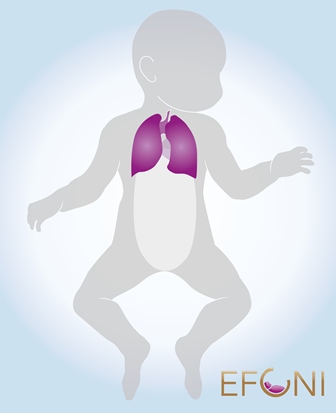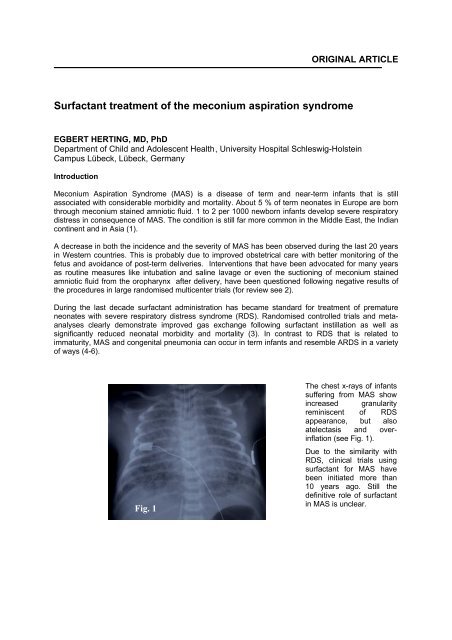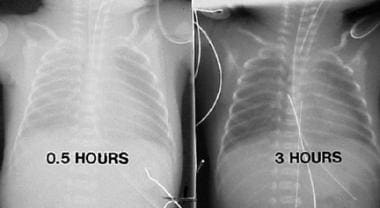The baby is monitored while giving surfactant. Surfactant is necessary for breathing.

Flowchart Of The Administration Of Surfactant Download Scientific Diagram
Surfactant treatment has become the standard of care in premature infants with respiratory distress syndrome (rds).

Surfactant premature babies treatment. Steroids work best when they are given between 24 hours and 7 days before birth, so theyre not useful in every pregnancy. Rds group, with a diagnosis of simple rds (n 80) and rds with pneumonia group, consisting of babies with a diagnosis of rds and a positive balf culture in. Pulmonary hemorrhage, pulmonary edema, pneumonia, and atelectasis have been shown to liberate inflammatory mediators and plasma proteins, which damage type ii pneumocytes and inactivat.
Evidence for surfactant in preterm infants the following summarises the evidence for exogenous surfactant in preterm infants. What is surfactant treatment premature babies? In conclusion, premature infants treated with a single dose of surfactant can usually be successfully extubated.
This is a substance that coats the airways and prevents them from collapsing and sticking together. Surfactant is delivered using an artificial airway or breathing tube that is inserted into the trachea, or windpipe, either immediately at birth for extremely premature babies, or later once respiratory problems have revealed themselves. Surfactant therapy is given by inserting a tube into the trachea of respiratory tract.
Natural surfactant is produced by the fetus before they are born and their lungs are prepared to breathe properly by about 37 week gestation. The route of administration is intratracheal. Surfactant treatment reduces the risk and the severity of respiratory distress syndrome (rds) in premature infants.
They reduce the risk of airleak, bpd and neonatal mortality1, 2. Surfactant is administered through the windpipe over the course of a few minutes. Surfactant therapy requires a doctor and an experienced nurse.
Treatment with exogenous surfactant, administered by endotracheal intubation or tracheal cannulation and bolus instillation, has been key in improving morbidity and mortality of infants with respiratory distress syndrome (rds) for more than 30 years.1 currently, many clinicians defer bolus surfactant administration until rds has progressed to clinically. It can either be given as rescue treatment in neonates or prophylactically in all neonates babies</strong> who have been given surfactants will need ventilatory support. If premature delivery is unavoidable but not imminent, then steroids are given to the mother before delivery can help a babys lungs to produce surfactant.
When premature lungs are treated with surfactant after birth, the infant's blood oxygen levels usually improve within minutes. The surfactant is indicated in all neonates with rds. Department of paediatrics, level 8,
This helps to understand the heart rate, respiratory rate and oxygen level of the baby. The lungs of premature infants, however, have not developed enough alveoli or type ii alveolar cells to produce the amount of surfactant needed to breathe properly. Natural surfactant is associated with greater early.
Despite its widespread use, the optimal method of surfactant administration in preterm infants has yet to be clearly determined. Known as a common condition in premature babies, newborn respiratory distress syndrome (nrds) occurs when an infants lungs arent fully developed.it results in breathing problems since the baby cant get enough oxygen. These morbidities include deficits in oxygenation, the incidence of pulmonary air leaks (pneumothorax and pulmonary interstitial emphysema) and the duration of ventilatory.
Surfactant replacement therapy for premature babies acts to keep the alveoli from sticking together, and is supplemented with oxygen or ventilation to help the baby breathe. Surfactant inactivation is present in neonatal pneumonia. Natural versus synthetic surfactant both natural and synthetic surfactants are effective in the treatment and prevention of rds.
Surfactant has revolutionized the treatment of respiratory distress syndrome and some other respiratory conditions that affect the fragile neonatal lung. Surfactant is a substance that allows the alveoli to remain open, making gas exchange easier. Researchers have developed a new treatment that can greatly improve the health outcomes of newborns with respiratory distress syndrome.
Surfactant replacement, given as prophylaxis or rescue treatment, reduces the incidence of rds, air leaks, and mortality in preterm infants with rds (level of evidence [loe] 1).

Treatment Of Breathing Problems In Premature Babies

Breathing Problems And Premature Babies

Pdf Surfactant Replacement Therapy For Preterm And Term Neonates With Respiratory Distress

Composition And Dosage Of Surfactants 17 Download Table

Single Dose Surfactant Early Rescue Therapy In Respiratory Distress Syndrome-experience And Outcome At A Tertiary Care Centre Semantic Scholar

Neonatal Respiratory Distress Syndrome Treatment Market Global Industry Analysis And Growth By 2020 Size Share Trends Opportunities Top 5 Key Players And Regional Forecast Up To 2027 Medgadget

Pdf Implementation Of Surfactant Treatment During Continuous Positive Airway Pressure

Surfactant Administration Nicu - Youtube

Pdf Surfactant Replacement Therapy For Preterm And Term Neonates With Respiratory Distress

Nicu Procedures- Surfactant Administration In A Preterm Infant - Youtube

Proposed Algorithm For The Treatment Of Rds Using Noninvasive Download Scientific Diagram

Surfactant Replacement In Neonates By Brian Walsh For Openpediatrics - Youtube

Exosurf Neonatal Surfactant Respiratory Treatment For Premature Babies Science Museum Group Collection

Surfactant Replacement Therapy A Milestone In Neonatology Efcni

Surfactant Treatment Of The Meconium Aspiration - Curoservice

Comparison Of The Effect Of Surfactant Administration During Nasal Continuous Positive Airway Pressure With That Of Nasal Continuous Positive Airway Pressure Alone On Complications Of Respiratory Distress Syndrome A Randomized Controlled Study -

Respiratory Distress Syndrome Workup Approach Considerations Procedures Blood Gases

Nicu Procedures- Surfactant Administration In A Preterm Infant - Youtube

Pdf The Role Of Surfactant Treatment In Preterm Infants And Term Newborns With Acute Respiratory Distress Syndrome Semantic Scholar
Surfactant Premature Babies Treatment. There are any Surfactant Premature Babies Treatment in here.